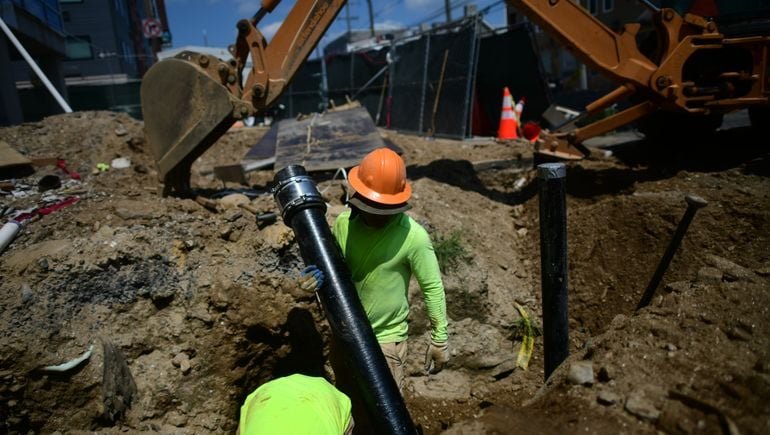Dive Brief:
- 2022 was a bad year for trench deaths, and 2023 could be worse. Last fiscal year, 39 U.S. workers died as a result of trench collapses, according to Stephen Boyd, deputy regional administrator of OSHA’s Region 6.
- That number was more than double the year prior, and the highest since at least 2017, Boyd said. He expects that trend to continue, as OSHA has already investigated several trench collapses in the first months of fiscal year 2023, which began Oct. 1.
- OSHA requires that employers protect workers from cave-ins by sloping and benching the sides of excavations; supporting the sides of excavations; or placing a shield between the side of excavations and the work area. In many instances, contractors have shoring shields on the jobsite but fail to use them, Boyd said during a presentation at Associated General Contractors of America’s health and safety conference last month.
Dive Insight:
An incident last year prompted OSHA to launch a national enforcement program in June, in an attempt to curb trench-related deaths.
Two workers in Jarrell, Texas, were leveling a sewer pipe in a 23-foot-deep and 34-inch-wide trench in June when it collapsed and killed them, OSHA reported. The trench had vertical walls and no protection system and workers’ nearest means for egress was over 130 feet away from where they were working. It had rained the afternoon before the collapse, and water had accumulated in the bottom of the excavation, which weakened the trench.
In December, OSHA fined Jarrell-based WBW Construction $250,272 for failing to protect the two workers.
Raising penalty costs
Penalties are one tool the agency uses to enforce safety and curb fatalities, and they were recently increased. On Jan. 17., OSHA increased maximum penalties for serious and other-than-serious violations from $14,502 to $15,625 per violation. The maximum penalty for willful or repeated violations increased from $145,027 to $156,259 per violation. The escalation stems from a 2015 law that stipulates increases each January to catch up with inflation.
Recent legislation in New York has heavily increased the punishment for contractors who are recklessly negligent in cases where, for example, trench protection is not used.
Late last year, Gov. Kathy Hochul signed Carlos’ Lawnamed for a worker who died in a trench collapse in 2015. The law raises penalties for criminally negligent employers in the state, increasing the $10,000 fine for a felony to a minimum of $500,000 and a maximum of $1 million, and the $5,000 fine for a misdemeanor to a minimum of $300,000 and a maximum of $500,000.








